Enterprise NFT Adoption 2024
Amidst the current bear market, a peculiar trend has taken root in the web3 ecosystem - major global corporations have warmly embraced non-fungible tokens (NFTs).
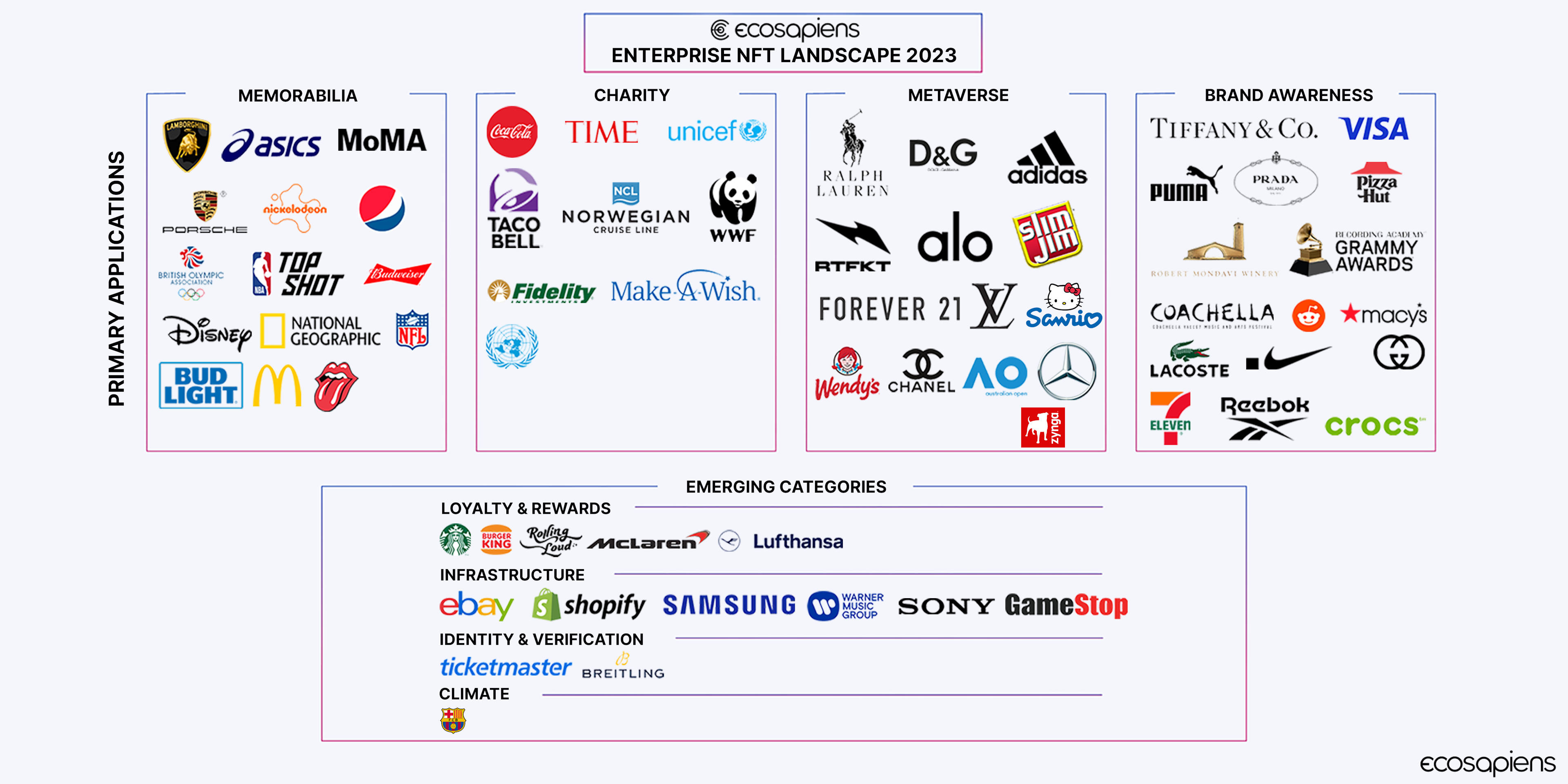
Enterprise NFT Landscape 2023
By Nihar Neelakanti, CEO Ecosapiens, 9/27/23
Introduction
Amidst the current bear market, a peculiar trend has taken root in the web3 ecosystem - major global corporations have warmly embraced non-fungible tokens (NFTs). Despite dwindling consumer confidence in digital assets and a noticeable slump in NFT trading volumes, a procession of illustrious entities, from Gucci and Tiffany & Co to Starbucks and Reddit, has taken a bold leap into the NFT realm. This analysis endeavors to unravel the forces propelling this unanticipated phenomenon while shedding light on the multifaceted applications of NFTs within the corporate sphere.
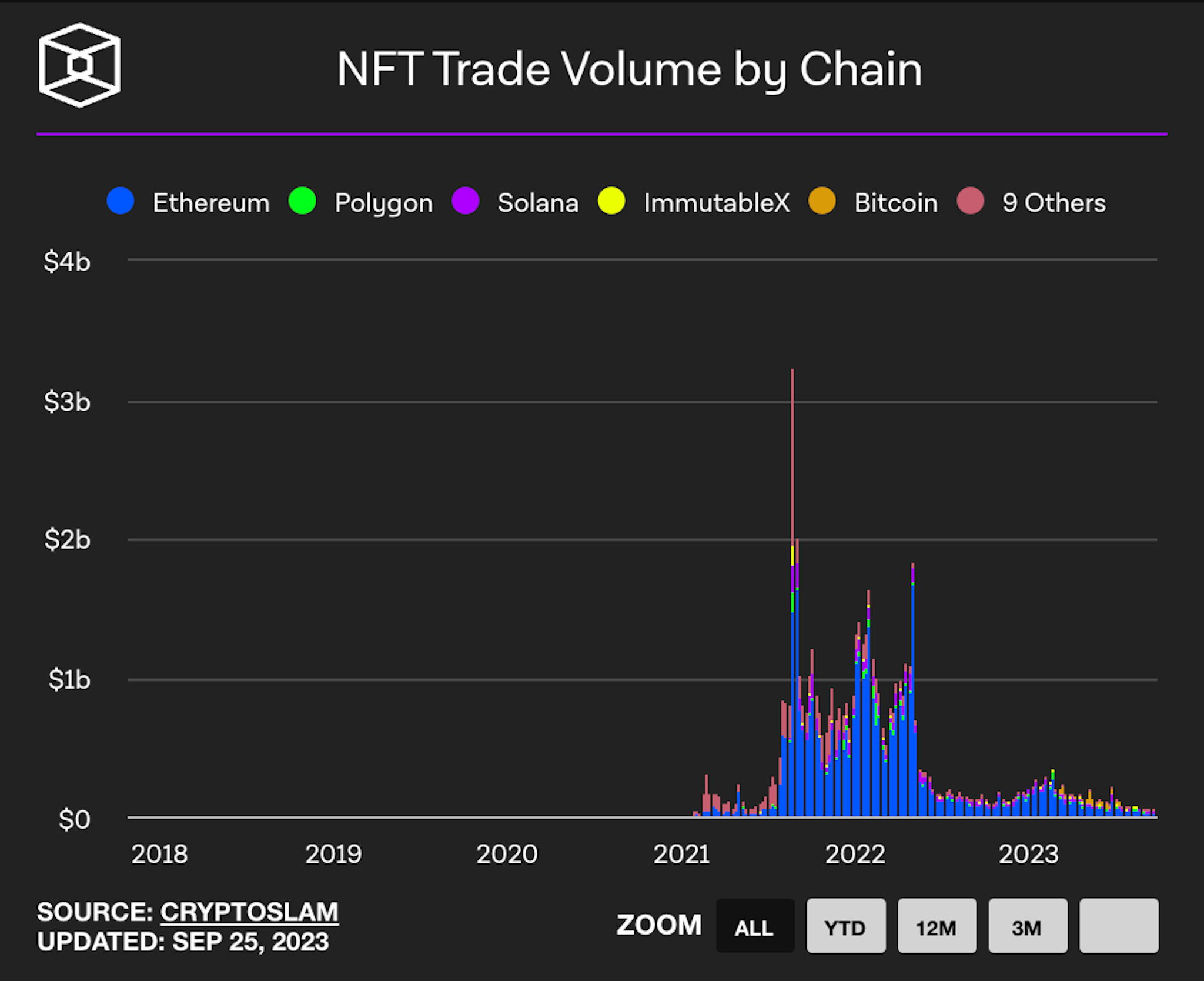
https://www.theblock.co/data/nft-non-fungible-tokens/nft-overview
Enterprise NFT Trends and Motivations
In the wake of the 2020 and 2021 NFT cycles, several corporate giants cautiously dipped their toes into the NFT waters, initiating their maiden NFT drops. Even venerable institutions such as UNICEF joined this wave by unveiling charitable NFT initiatives. While the initial allure may have been the astronomical trading volumes and soaring prices, many enterprises have chosen to deepen their engagement with the web3 sphere, driven by two overarching factors: a growing recognition of the enduring and fundamental utility of NFT technology and its limitless applications, coupled with a steadfast determination to remain at the vanguard, steering clear of obsolescence as articulated by the "innovator's dilemma."
The 4 Primary Applications of NFTs for Enterprises
1. Memorabilia:
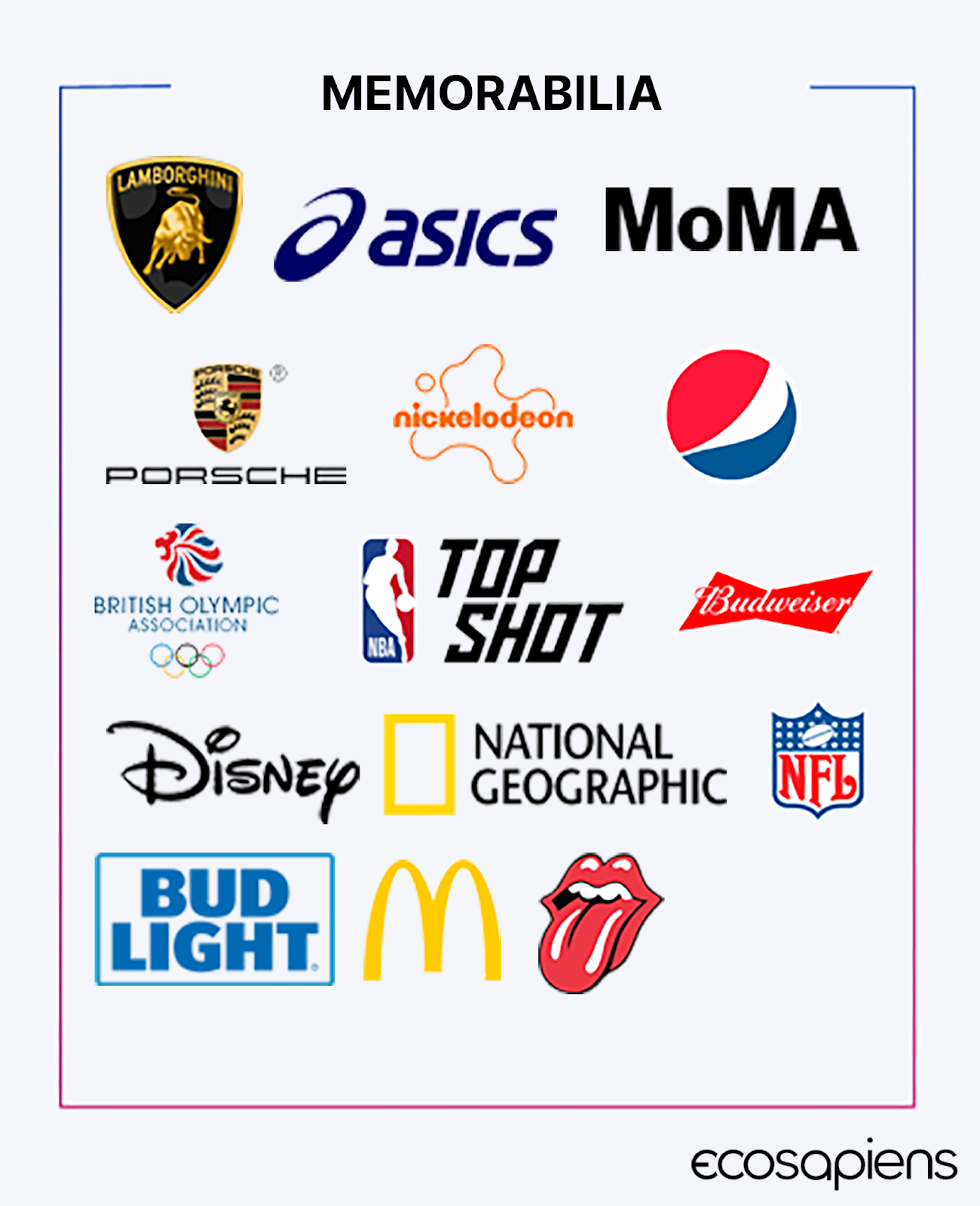
Esteemed brands with established collector communities are harnessing NFTs to craft immersive and collectible experiences. NFT-based memorabilia derive their value from their affiliation with specific passions or interests.

Case Study: Lamborghini has created a line of NFTs that allow fans to own digital versions of their favorite Lamborghini cars while also getting the chance to participate in unique digital experiences. The memorabilia NFT approach works well for Lamborghini because the cars are iconic, ingrained in pop culture (the logo is worn on hats, for example), and people already buy toy versions of their vehicles. In February, they dropped four rarities of the Lamborghini Huracán via the Veve platform, totaling 5,148 pieces. Each sold for $70. Collectors can view their collectibles via a virtual showroom or “drive” their vehicle using AR (Augmented reality) technology.
Which companies do Memorabilia NFTs apply to?
- This works well for companies with established cultural IP and active fanbases.
- This does NOT work well for companies that do not have active IP or nostalgia around the brand.
- For example, YES to Nickelodeon, NO to Dell Computers.
2. Charity:
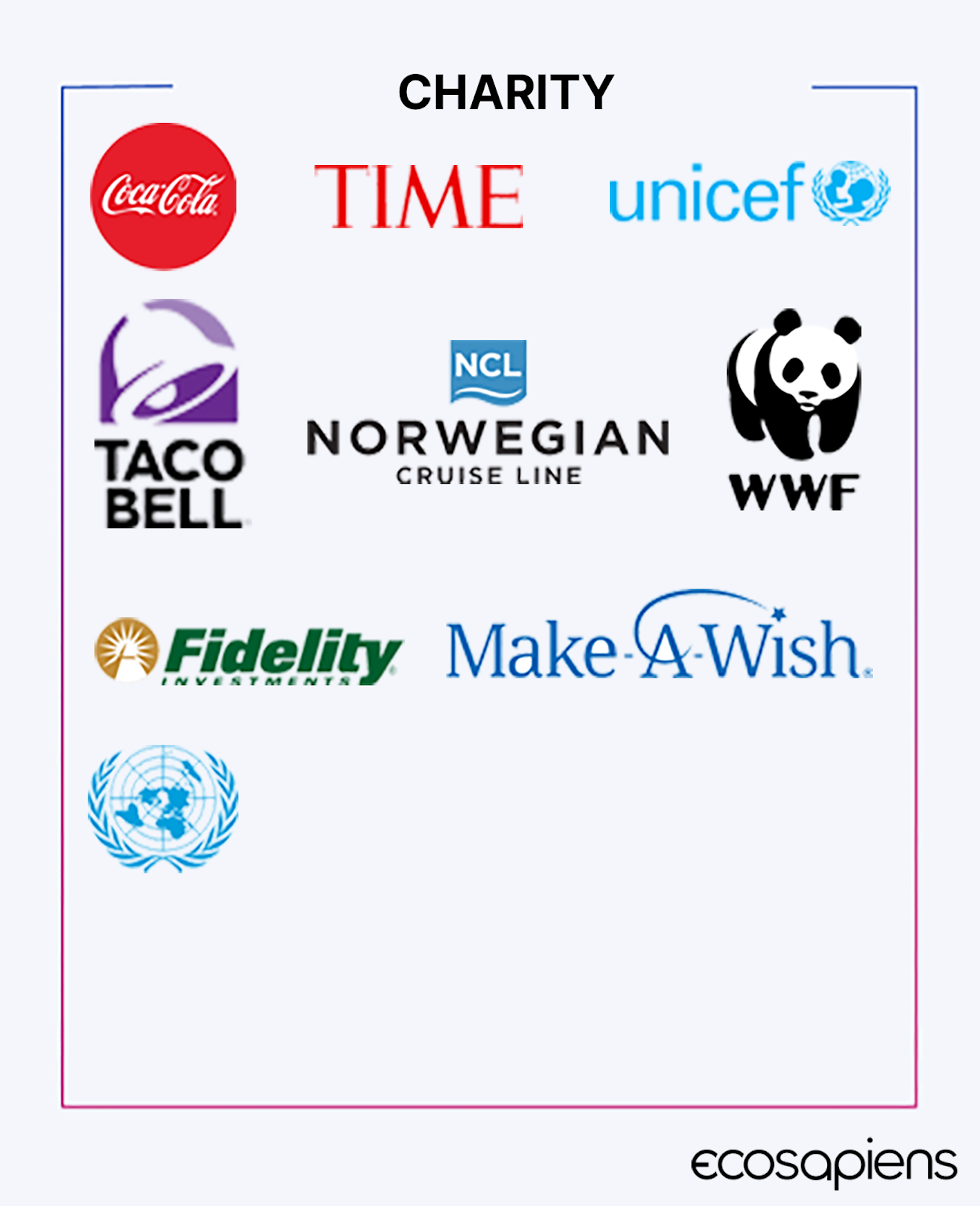
Enterprises are harnessing the transformative potential of NFTs to raise funds for charitable causes, philanthropic organizations, and noble missions. Distinguished brands such as Coca-Cola, Time, Taco Bell, Norwegian Cruises, UNICEF, and WWF have executed charitable NFT campaigns, effecting positive change through innovative means.
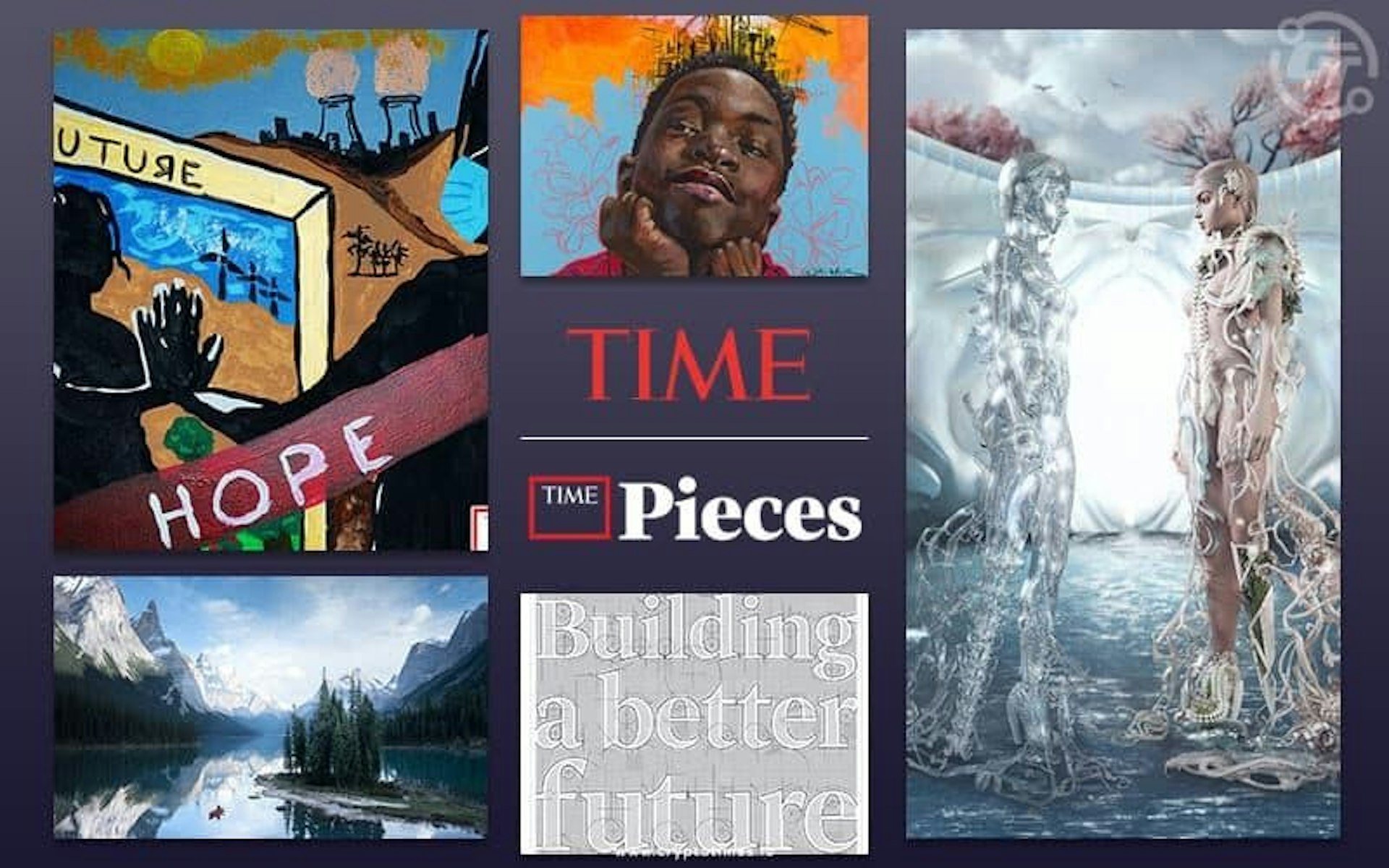
Case Study: Time Pieces, Time Magazine’s web3 brand has taken a multifaceted web3 approach, including memorabilia, the metaverse, and charity fundraising, releasing over 20,000 NFTs and raising over $600,000 for various causes since 2021. Given the brand’s reputation, trustworthiness, progressiveness, and authority, the charity approach works well for Time. Consumers also already purchase and collect physical magazines, so commemorative digital versions make sense.
Which companies do Charity NFTs apply to?
- This works incredibly well for companies with a history of philanthropy or charitable giving. We recommend partnering with a web3 organization with added value beyond mere donations.
- This does NOT work for companies new to philanthropy, as launching charity NFTs can seem opportunistic, especially for environmentally-focused brands, due to crypto's perceived negative impact, as evidenced by WWF halting their project.
- For example, YES to the UN, NO to Shein.
3. Metaverse:
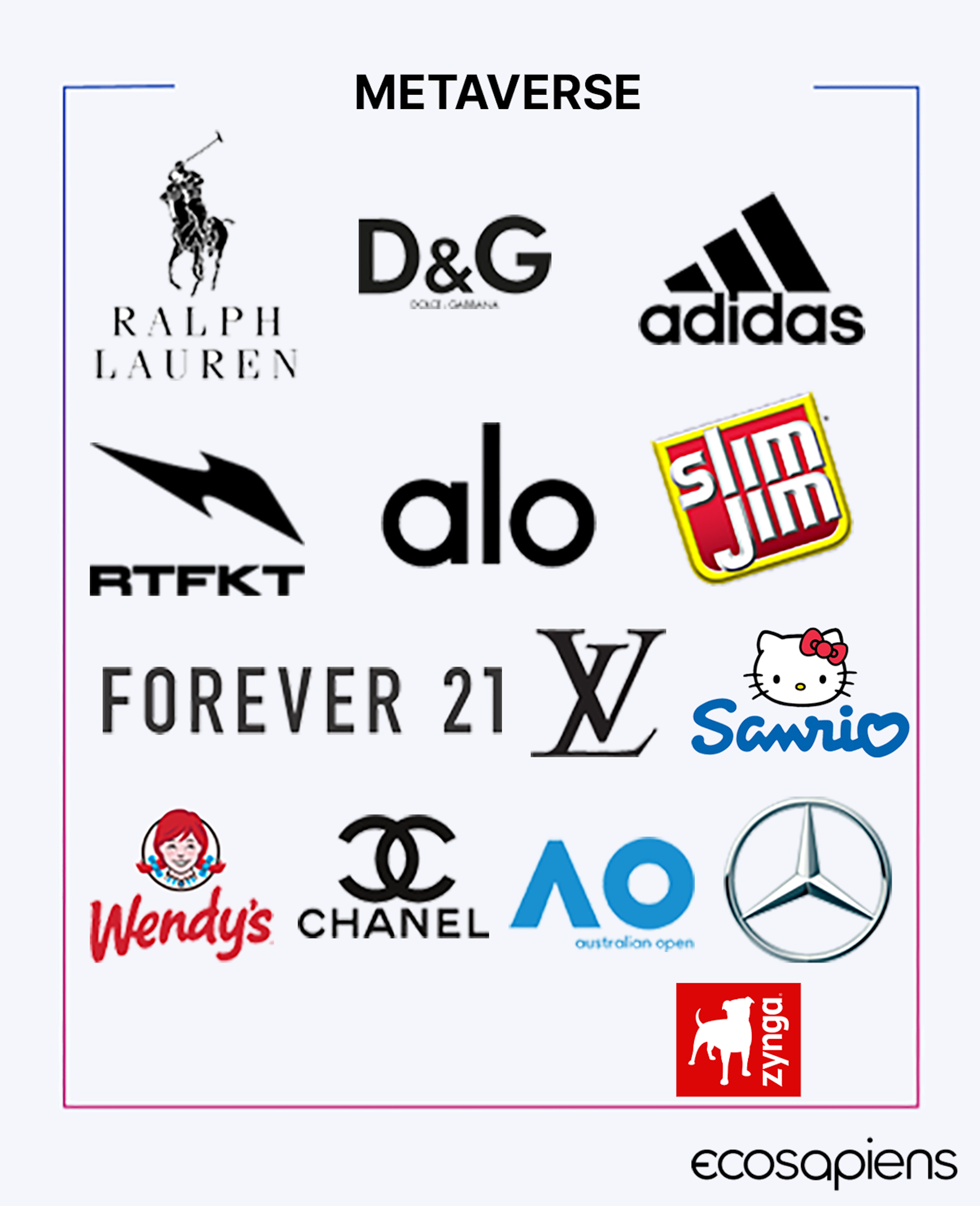
Corporate entities are embarking on a pioneering journey into the metaverse, leveraging NFTs to facilitate immersive interactions within computer-generated environments and among users. Visionary enterprises such as Ralph Lauren, Dolce & Gabbana, Adidas, RTFKT, and Alo Yoga are blazing a trail in this burgeoning domain.
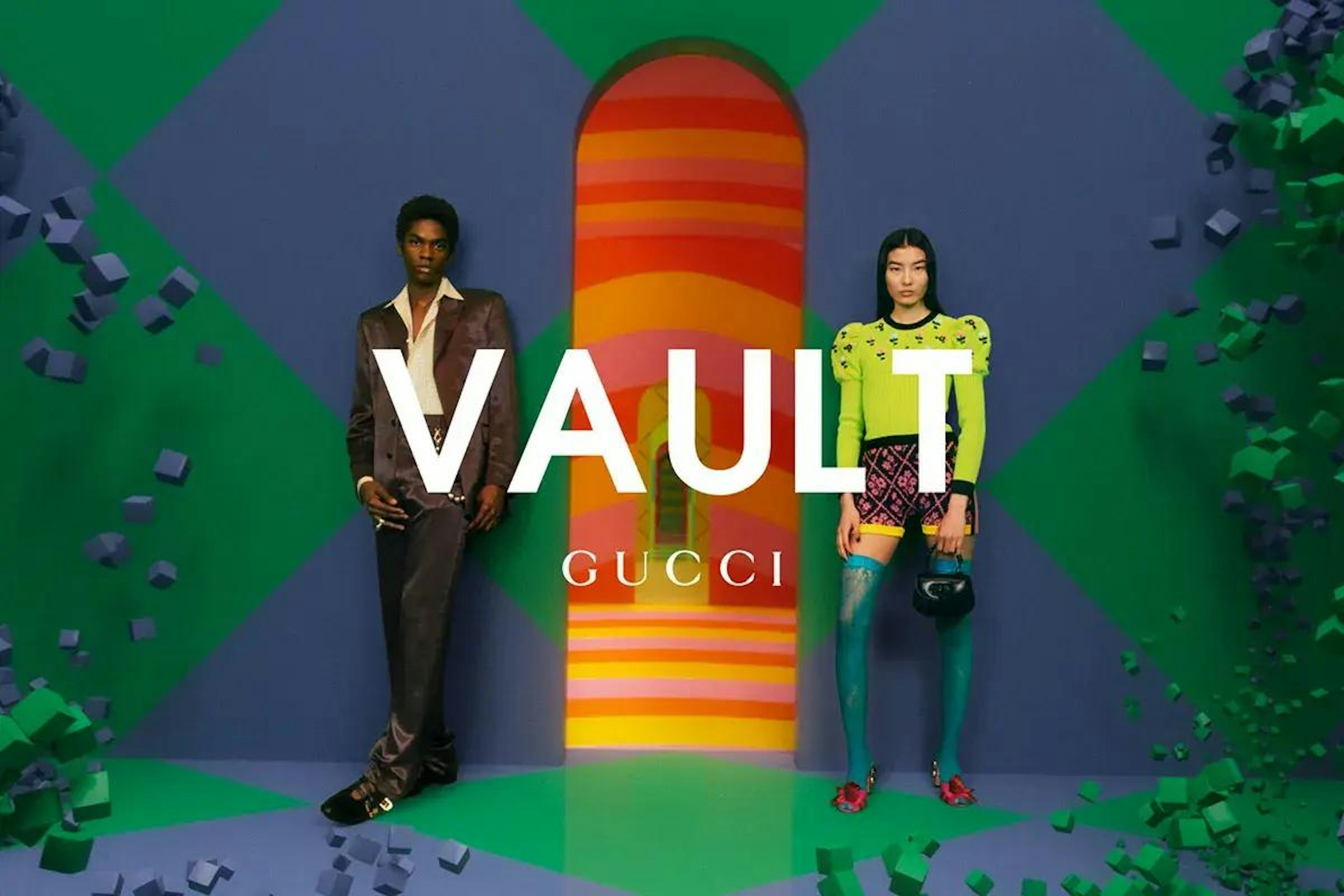
Case Study: Gucci has a multifaceted approach to its Web3 strategy, including building a presence in the metaverse to sell virtual goods and NFTs and create immersive experiences for customers. They’ve also released numerous “phygital” goods, physical products with a corresponding digital twin in the metaverse. To date, they’ve generated over $11.6M across collections and have built a community of over 52,000 in their Discord. This approach makes sense for Gucci, given luxury brands want to appeal to younger audiences and deepen their relationship with their audience. It also makes sense to invest in digital experiences, given Gucci’s worldwide audience.
Which companies do Metaverse NFTs apply to?
- This works exceptionally well for apparel, gaming, pop culture (food is a subsection of culture), and luxury brands due to their capacity to provide immersive engagement, authentic brand experiences, community building, and future-proofing in a rapidly evolving digital landscape.
- Likewise, a key distinction for Metaverse is having a significant digitally savvy consumer base upfront.
- This does NOT work well for highly specialized companies or companies with service-based business models where the benefits of virtual engagement and community building are not relevant or applicable.
- For example, YES to Adidas, NO to LinkedIn.
4. Brand Awareness:
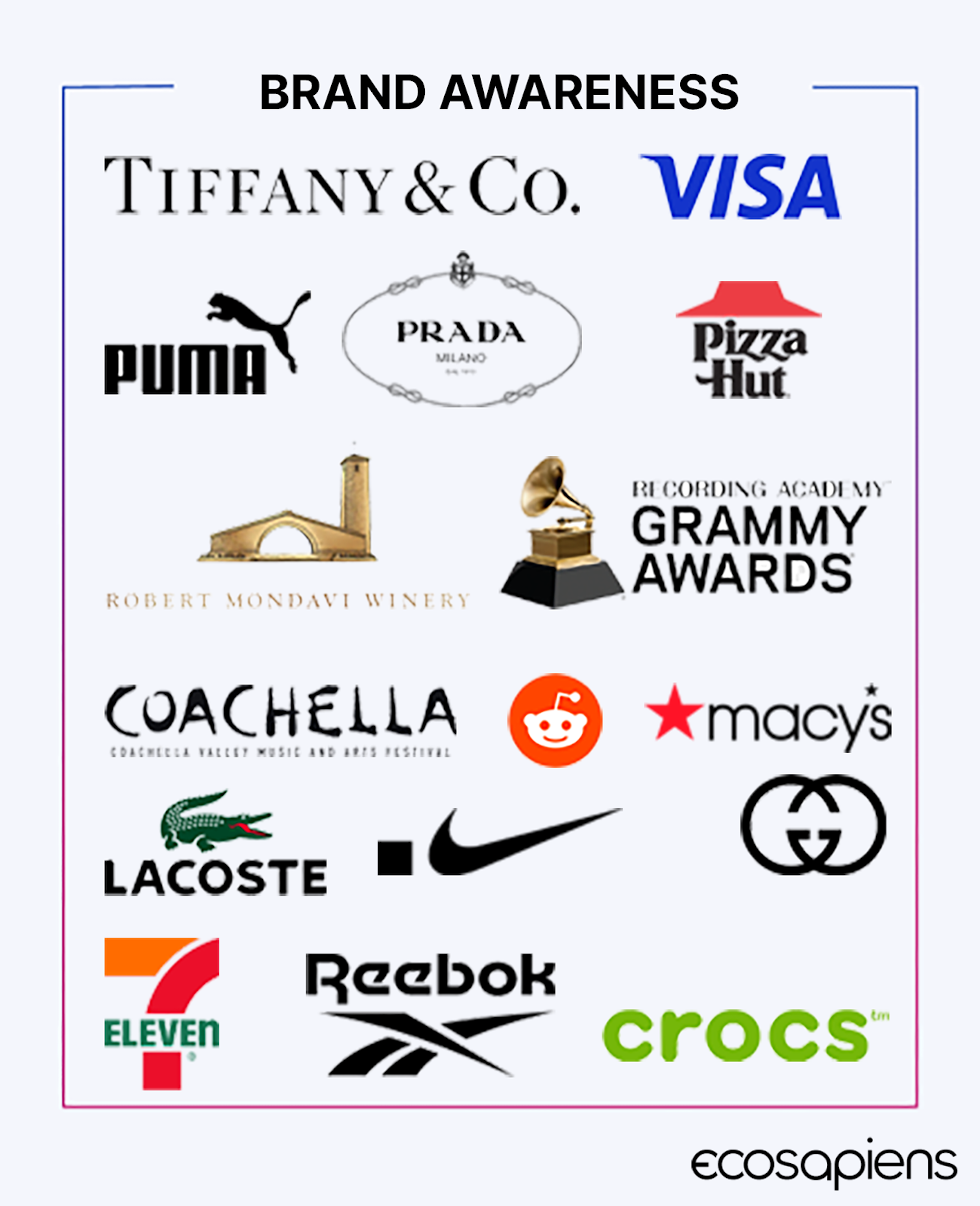
Some corporations employ NFTs as a conduit to connect with a tech-savvy, younger audience. However, a delicate balancing act is essential to avoid being perceived as opportunistic, capitalizing on web3 without fostering enduring value for the community. Brands such as Tiffany & Co, Visa, Dolce & Gabbana, Prada, Robert Mondavi, Grammy's, McDonald's, Coachella, Macy's, Lacoste, Dot Swoosh, Gucci, Puma, and Reddit have ventured into NFTs to enhance brand visibility.
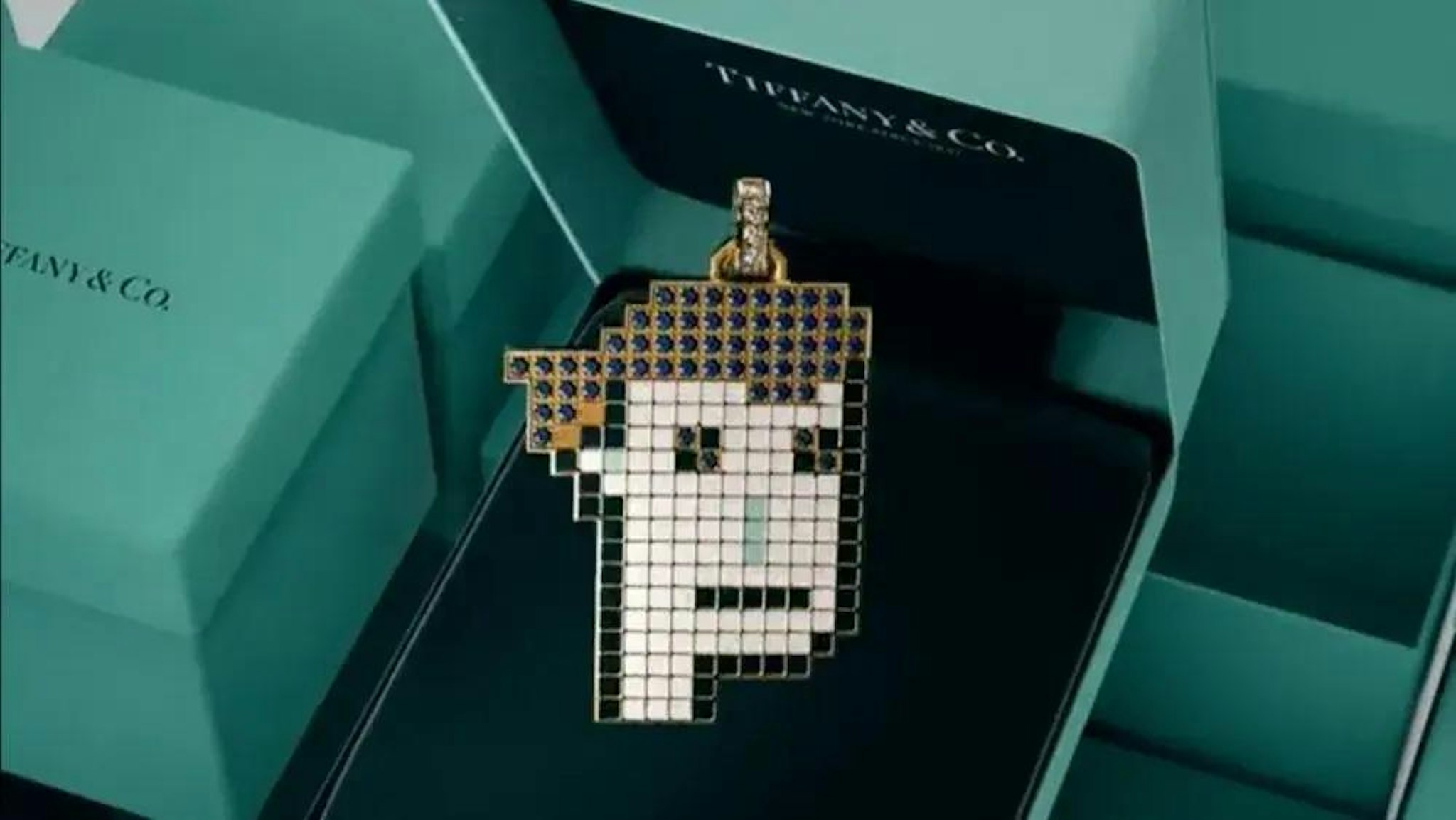
Case Study: Tiffany and Co. sold 250 'NFTiffs,' digital passes that can be minted and redeemed for custom-designed CryptoPunks pendants and a matching NFT art piece. At mint, each piece cost 30ETH, roughly $50k at the time, netting the company ~$12.5M. This approach makes sense for Tiffany because it allows them to tap into a new, high-value customer base in the web3 native CryptoPunks community. At one point, the NFTs traded at a floor price of 59 ETH, roughly $116,000.
Note*: brand awareness is a facet of NFTs that bleeds into all the prior applications we’ve mentioned. For example, while Nike has released a metaverse product through RTFKT, the NFT is also clearly a way to generate brand awareness among a younger generation.
Which companies do Brand Awareness NFTs apply to?
- This works incredibly well for physical companies with native communities where their audience can further their relationship with a brand digitally.
- This does NOT work well for localized companies with natively offline customer bases, traditional businesses, or companies in highly regulated industries.
- For example, YES to McDonald’s, NO to Home Depot.
Emerging NFT Categories for Enterprises

Loyalty and Rewards:
Enterprises like Starbucks leverage NFTs to cultivate customer relationships and engender loyalty by offering enticing rewards and discounts. Recently, we saw airline behemoth Lufthansa enter the space as well.
Infrastructure:
Forward-looking corporations, including eBay, Shopify, and Samsung, are spearheading initiatives to develop the critical technological underpinnings required to facilitate the scale and integration of new participants into the web3 ecosystem.
Identity and Verification:
Enterprises such as Ticketmaster and LinkedIn are actively exploring NFTs as a robust mechanism for identity verification, bolstering the authenticity and credibility of credentials.
Climate:
We’re seeing the rise of consumer participation in the impact NFT market (see our article in Nasdaq here), but to a more significant degree, we believe carbon offsets offered as NFTs will be a unique opportunity for large corporates to encourage their existing carbon offset offerings at checkout, as employee perks, and as loyalty and rewards. We at Ecosapiens are helping shape this narrative.
Recommendations and considerations
- Incorporations must prioritize delivering intrinsic value and enduring utility through their NFT endeavors, transcending the allure of short-term financial gains.
- Consider collaborating with web3-first brands or laying the foundations for dedicated communities rather than solely relying on partnerships with existing NFT marketplaces.
- For example, we’ve seen collaborations between Gmoney and Adidas, BoredApeYachtClub and Rolling Stone, Crocs and Doodles, and Reebok and VeeFriends.
- Fostering and nurturing a dedicated community remains the linchpin for sustainable success within the dynamic NFT landscape.
- There may need to be more than just launching with a significant marketplace such as Opensea and Magic Eden to gain outlier visibility. Real boots on the ground and cranking in discords are still a requirement.
- While dismissable, the environmental impact of NFTs is still *perceived* as an issue in the public's eye. In comms, thoughtful education around the energy use and impact of digital assets is required. That being said, we’re seeing this become significantly less of a challenge since EVM chains across the board have gone proof of stake.
Conclusion
The bear market has failed to deter iconic global brands from embracing NFTs as they discern this transformative technology's latent potential and manifold applications. By comprehending the primary use cases and emerging vistas of NFTs within the corporate realm, enterprises can craft astute NFT strategies and assert their presence in the ever-evolving web3 frontier.
If you’re interested in discussing how NFTs can integrate into your organization or how we can advance your climate plan through digital collectibles, please reach out to nihar@ecosapiens.xyz.
Special shoutout to Niko Katsuyoshi on the Ecosapiens team for taking on the lion-share of the research for this paper.